Writing a Summary
Writing a Summary
What is a Summary?
A Summary is a shortened version of any piece of writing in which you express in your own words and as briefly as possible the most essential information of that original piece of writing. Your purpose in writing a summary is to “sum up” the original writing by including only the most relevant points the author makes. You are writing an objective description of another’s writing and should not include your own personal opinions of that writing (unless your instructor specifically asks for your commentary and your opinion).
Strategies for Writing a Summary:
- Reading, Rereading, Highlighting, and Skimming
Read the material you plan to summarize carefully. On a second reading, you might highlight the main ideas (literally, with a highlighter pen), make notes in the margin, or outline the writing you plan to summarize. Before you begin to write your summary, skim over the material, noting the key ideas once more. - Finding and Using the Main Points
Assess the author’s main point and approach to writing – analysis, argument, exploration, definition, and narrative – and compose a sentence that includes who the author is and what he has written as well as his purpose in writing. Notice how the author has organized his writing, particularly the use of paragraphing, transitions, restatements for emphasis, and other stylistic devices. Write one or two sentences that briefly paraphrase the author’s primary support for each section or division of the original text. Once you have written a sentence for each main idea, you have, in essence, written topic sentences for your summary. - Final Draft
Use the topic sentences you have written to organize your summary, which should be presented in the same chronological order as the original text. Use transitions in order to make your summary cohesive and logical. Because your summary is intended to be short, you may combine sentences when you can avoid repeating information and to avoid choppiness in your writing. When you have finished your summary, review with the following question in mind: Would someone reading your summary have a clear and accurate idea of what the original writer has written?
Remember:
A summary is a shortened version of any piece of writing that you express in your own words. Your summary should be brief and include only the most relevant points the author makes (Please note the sample summary).
Article: “Anatomy of a First Aid Kit”
A well-stocked first aid kit is a handy thing to have. To be prepared for emergencies, keep a first aid kit in your home and in your automobile. Carry a first aid kit with you or know where you can find one when you are hiking, biking, camping, or boating. Find out the location of first aid kits where you work.
First aid kits come in many shapes and sizes. A, You can buy one from a drug store, or your local Red Cross chapter might sell them. B, You can make your own first aid kit. C, Some kits are designed for specific activities, such as hiking, camping or boating. Whether you buy a first aid kit or put one together, make sure it has all the items you may need. Include any personal items, such as medications and emergency phone numbers, or other items your physician may suggest. Check the kit regularly. Make sure the flashlight batteries work. Check expiration dates and replace any used or out-of-date contents.
Sample Summary
In their article “Anatomy of a First Aid Kit,” the American Red Cross advises people to have first aid kits on hand at home, when traveling, or at the work place (22). First aid kits can be purchased or assembled by individuals for specific activities such as outdoor recreation. The main consideration is to have everything necessary in a first aid kit, such as medications, phone numbers and other essential items. Finally, first aid kits should be kept up-to-date so that everything needed is ready for use in case of an emergency.
The American Red Cross. “Anatomy of a First Aid Kit.” Adult CPR. St. Louis: Mosby Lifeline, 1993.
Page last updated June 26, 2023.


